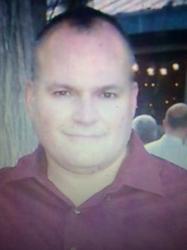The multi-talented Ladd excelled at football, wrestling, and basketball.
Ernie “The Big Cat” Ladd. Mention his name to any sports fan born in the 1960s or 1970s, and most folks would likely remember him as a pro wrestler. I was born in 1962, and that is how I remember him. I didn’t know at the time that Ladd had also played pro football, and I was a big football fan, too!

Courtesy of Dan Daly’s Pro Football Daly
I learned that Ladd played in the American Football League because a wrestling announcer mentioned it during a broadcast. I was six years old when Ladd retired from pro football, and I didn’t know as many AFL players as I did NFL players.
Being a football historian, even at that young age, I started looking through my football books and magazines to see if I could find anything about Ernie Ladd. I learned that Ladd not only played pro football but that he was one of the best defensive linemen in AFL history. He was also one of the biggest, standing 6’9″ and weighing nearly 300 lbs.
Ladd played for the San Diego Chargers from 1961-1965, was named first-team All-AFL three times, and was a key player on the Chargers’ 1963 AFL Championship team. Those are legacy achievements. So, to no surprise, Ladd is a member of the Chargers’ 50th-anniversary team, the Chargers Hall of Fame, and the Grambling State Hall of Fame, where he played college ball. After leaving San Diego, Ladd played for the Houston Oilers in 1966 and part of 1967 before playing for the Kansas City Chiefs until he retired after the 1968 season due to knee injuries.
Ladd spent the off-season wrestling during his entire football career, and he began wrestling full-time in 1969. Along the way, Ladd became one of pro wrestling’s most hated heels. The “Big Cat,” who occasionally went by the nickname of “The King,” wore a crown into the ring. Due to his immense size (weighing 320 lbs as a wrestler), Ladd was often matched up against Andre the Giant, whom Ladd called Andre “The Dummy.” Not known for being politically correct, Ladd often referred to rival Wahoo McDaniel, who also played AFL football, as “The Drunken Indian.” These insults did not endear Ladd to many fans, but it was all part of his persona.

Courtesy WWE
Besides being a great football player, Ladd excelled in basketball and attended Grambling State University on a basketball scholarship. Still, he had never wrestled as an amateur and was not known for possessing many wrestling moves. He was a brawler whose favorite move was to jam his taped thumb into his opponent’s throat. That said, he was good at his craft, inducted into the WCW Hall of Fame in 1994 and the WWF Hall one year later.
During his wrestling career, Ladd worked as a behind-the-scenes booker for promoter Bill Watts in the Mid-South territory. After retiring in 1986, Ladd worked as a color commentator for a while, and he opened a restaurant in New Orleans named Ernie Ladd’s “Throwdown” BBQ Restaurant. Unfortunately, the restaurant was destroyed by Hurricane Katrina in 2005.
Unlike the bad guy arrogant character he played as a wrestler, Ladd was a deeply religious man who cared about people. A victim of the hurricane himself, he still took the time to minister to Katrina evacuees at the Astrodome in Houston. Ladd also served as a basketball coach for young children in Franklin, Louisiana. Sadly, Ernie Ladd died of cancer in 2007 at 68.
As a side note, I saw Ladd wrestle live a few times in my youth. One time, I brought along a picture of him in his Kansas City Chiefs football uniform. I was going to ask him to sign it for me, but when he approached the ring yelling at fans and acting the part of the “bad guy,” I chickened out and didn’t ask him. Looking back, I wish I had.














